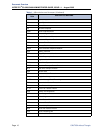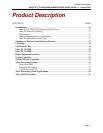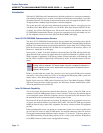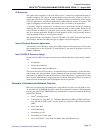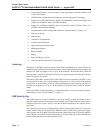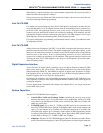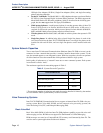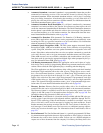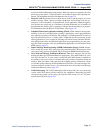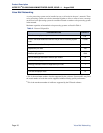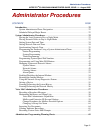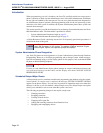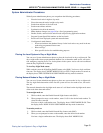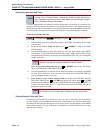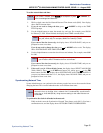
Product Description
INTER-TEL
®
CS-5200/5400 ADMINISTRATOR GUIDE, ISSUE 1.1 – August 2005
Page 18 Voice Processing System Applications
• Automated Attendant: Automated Attendant is a programmable feature that provides
automated call answering services. Calls can transfer, forward, or directly ring in to
Automated Attendant. When Automated Attendant answers a call, it plays a recording
that gives dialing instructions. After hearing the recording, or at any time while it is
playing, the caller may dial an extension or mailbox number. For information about the
Automated Attendant feature, refer to page 259.
• Automated Attendant Recall Destination: If a call that is transferred by Automated
Attendant is not answered before the Transfer Voice Processor timer expires, the call
recalls the Automated Attendant Recall Destination. The Recall Destination announces
that the phone is unavailable and allows the caller to leave a message if the phone has
an associated mailbox, or to dial another extension. For information about the Auto-
mated Attendant Recall Destination, refer to page 260.
• Automatic Fax Detection: With Automatic Fax Detection, Call Routing Announce-
ment (CRA) applications and mailboxes can be programmed to automatically route
incoming fax calls to a specified extension or to an e-mail address. For information
about the Automatic Fax Detection, refer to page 263.
• Automatic Speech Recognition (ASR): The EM system supports Automatic Speech
Recognition (ASR). ASR can be enabled on many levels within the voice processing
system. Using EM, subscribers can issue spoken commands to navigate the voice mail
menus. Subscribers and nonsubscribers can also use spoken commands to search the
voice mail directory and to navigate Automated Attendant menus and CRA paths.
When ASR resources are not available, subscribers and nonsubscribers can also per-
form these tasks by pressing the appropriate dialpad digits when prompted by the sys-
tem. For information about ASR, refer to page 264.
• Call Routing Announcement (CRA): This application can be used in place of a play-
back device and is useful for programming Hunt Group announcement and overflow
stations. When called, the CRA application plays a recording and then hangs up.
The CRA application uses digit translation to help calling parties reach their intended
destinations. Digit translation allows the caller to press a single digit to access a mail-
box, a Fax-on-Demand function, a station, or a Hunt Group. Digit translation can be
programmed for each digit from 0 through 9, #, and *, plus a Timeout option that
applies if the caller does not enter a digit when prompted. If programmed, each digit
could lead the caller to a “digit translation node” that has its own set of digit translation
values. This layered CRA digit translation creates a “tree” of programmable digit trans-
lation nodes. For more detailed information about CRA, refer to page 265.
• Directory Services: Directory Services provide callers with a list of mailboxes and
extension IDs that can be accessed through Voice Mail or the Automated Attendant.
The Directory feature is available in each of the voice processing systems, but varies
slightly in the EM system. For information about directories, refer to page 268. For
information about using directories in EM, refer to page 271.
• E-mail Reader: E-mail Reader is a licensable feature available with the EM voice pro-
cessing system. It provides users with advanced mailbox capabilities through Text-To-
Speech (TTS) technology. When E-mail Reader is enabled for a mailbox, users can
access voice mail, e-mail, and fax messages by logging in to their mailboxes. E-mail
Reader announces the message envelope and can also “read” the text in the body of e-
mail messages. E-mail Reader users also have access to additional message options,
which vary based on the media type. For information about E-mail Reader, refer to
page 274.
• Fax-On-Demand: The Fax-On-Demand feature is a specially programmed Call Rout-
ing Announcement application that uses digit translation to allow callers to select the
documents they want to have faxed to them. Callers can use a DTMF endpoint to
request one or more documents from the company’s fax library, the library that is also



